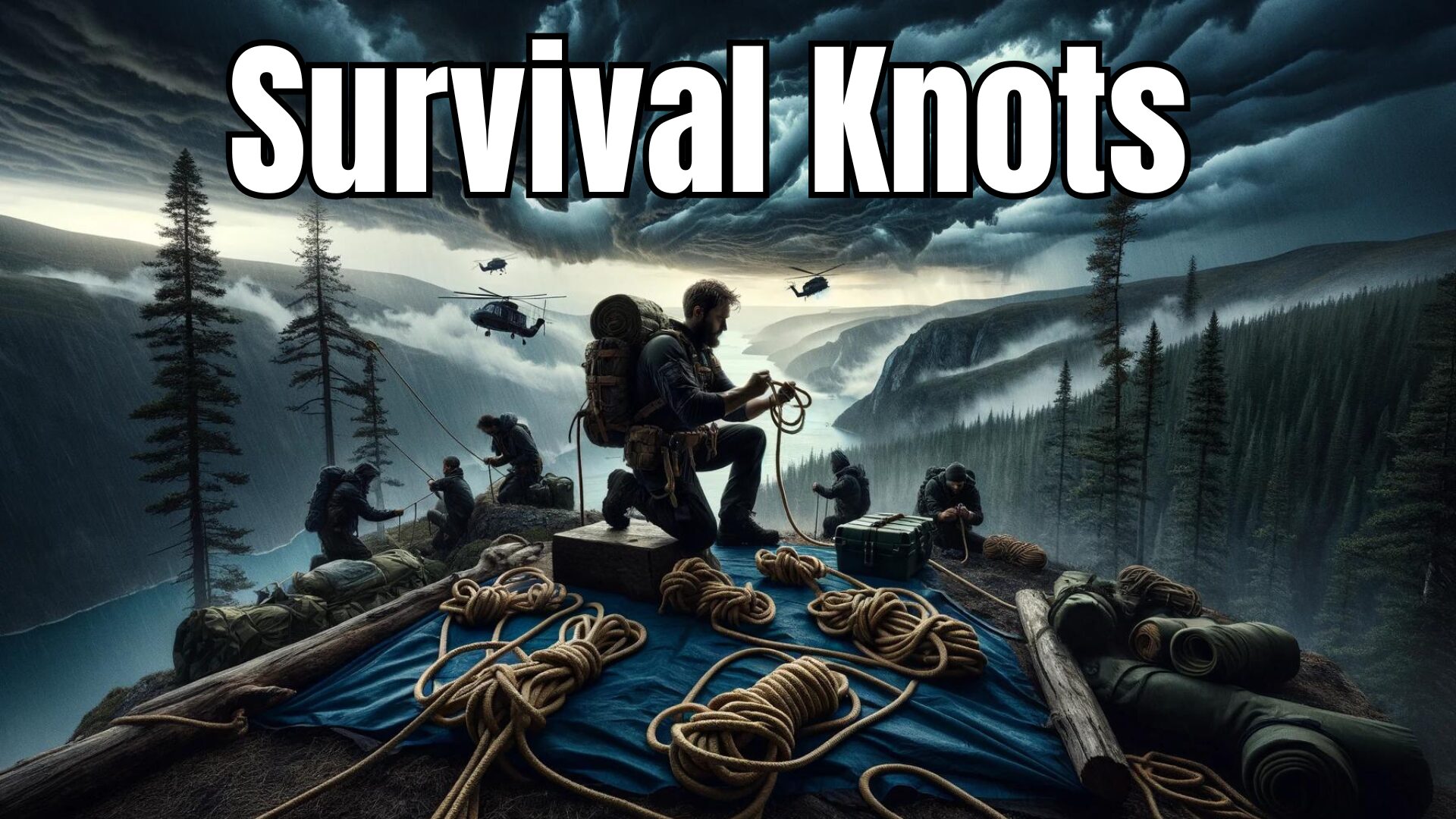Embark on a journey of mastering the art of knot-tying, a skill as ancient as it is essential.
From securing a shelter to ensuring safety in the wild, the knots you’ll learn today are more than mere twists and loops; they are the ties that bind the fabric of outdoor survival and adventure.
Table of Contents
Bowline Knot: The Foundation of Survival Rigging

Why the Bowline Knot is Essential in Survival Situations
The bowline knot is not just any ordinary knot; it’s an essential survival knot that every camper and outdoor enthusiast should master.
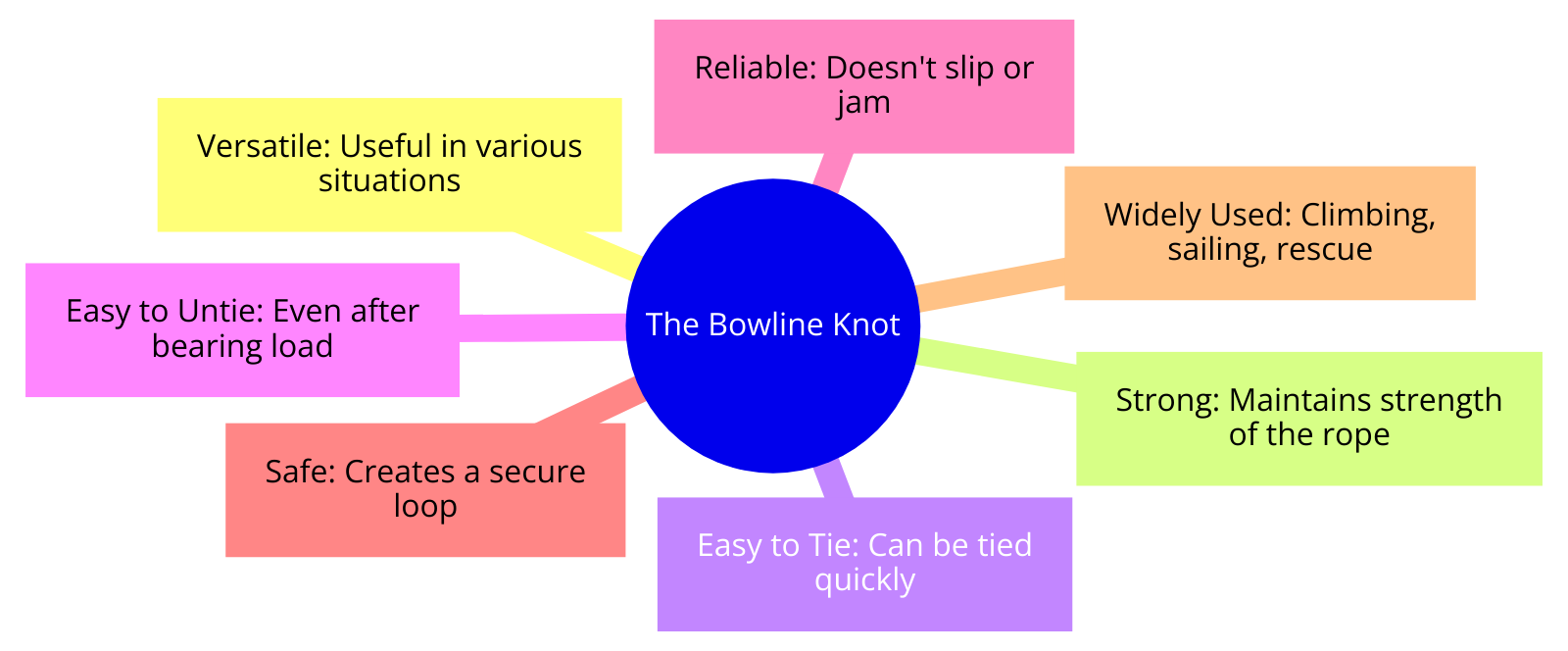
It’s easy to tie and holds firm when you need it the most, unlike a square knot that might slip or a clove hitch that’s not as versatile.
| Knot | Ease of Tying | Strength | Versatility |
|---|---|---|---|
| Bowline | Moderate | High | Versatile |
| Square Knot | Easy | Moderate | Limited |
| Clove Hitch | Easy | Low | Moderate |
How to Tie the Bowline Knot and When to Use It
To tie a bowline knot, form a loop with the rope, pass the end through the loop, wrap it around the standing part, and feed it back through the loop before pulling it tight.
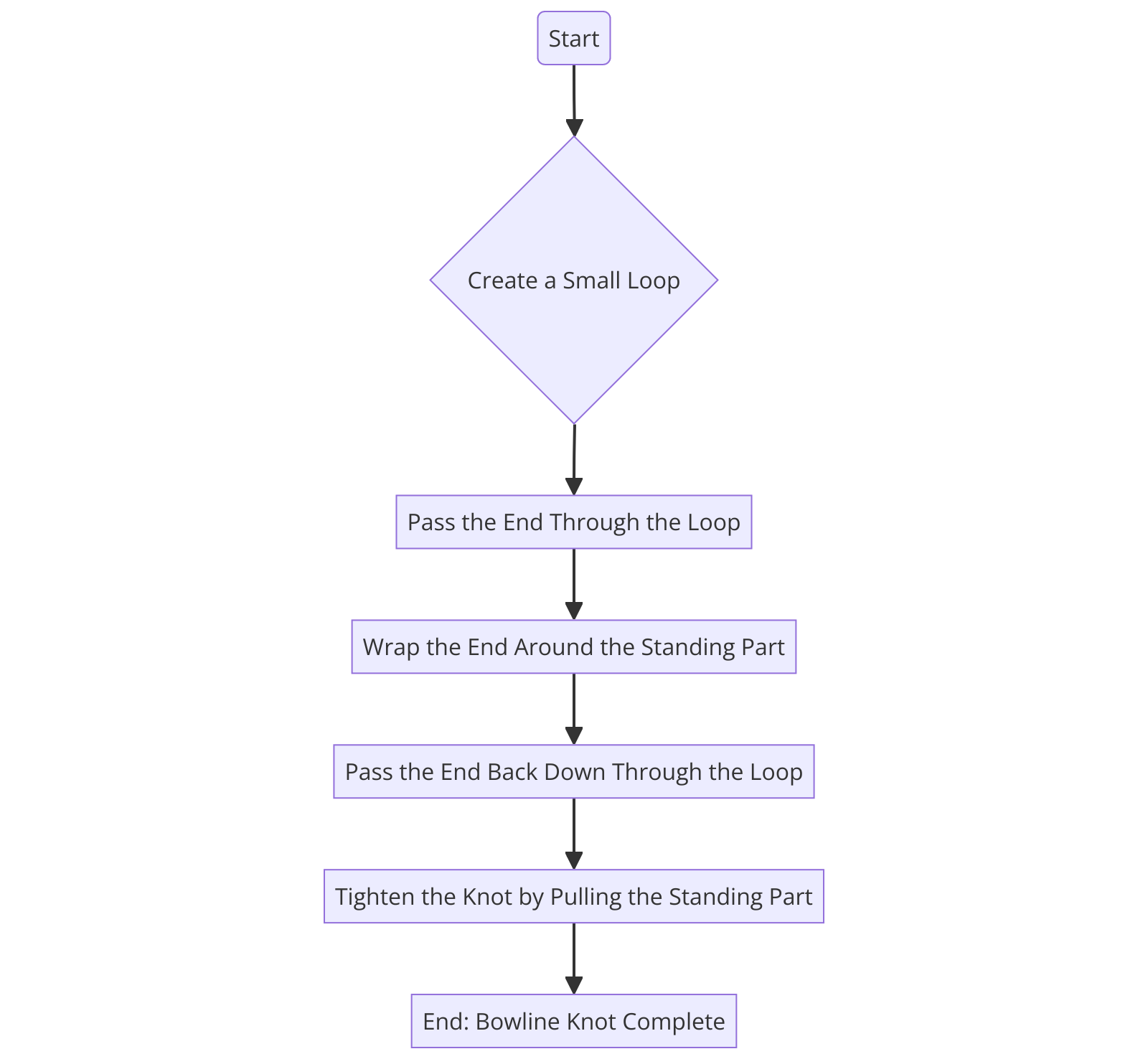
This knot creates a secure loop that won’t slip or loosen, making it ideal to join two ropes together using a sheet bend or tighten items down when needed.
Clove Hitch: Securing Gear and Shelters
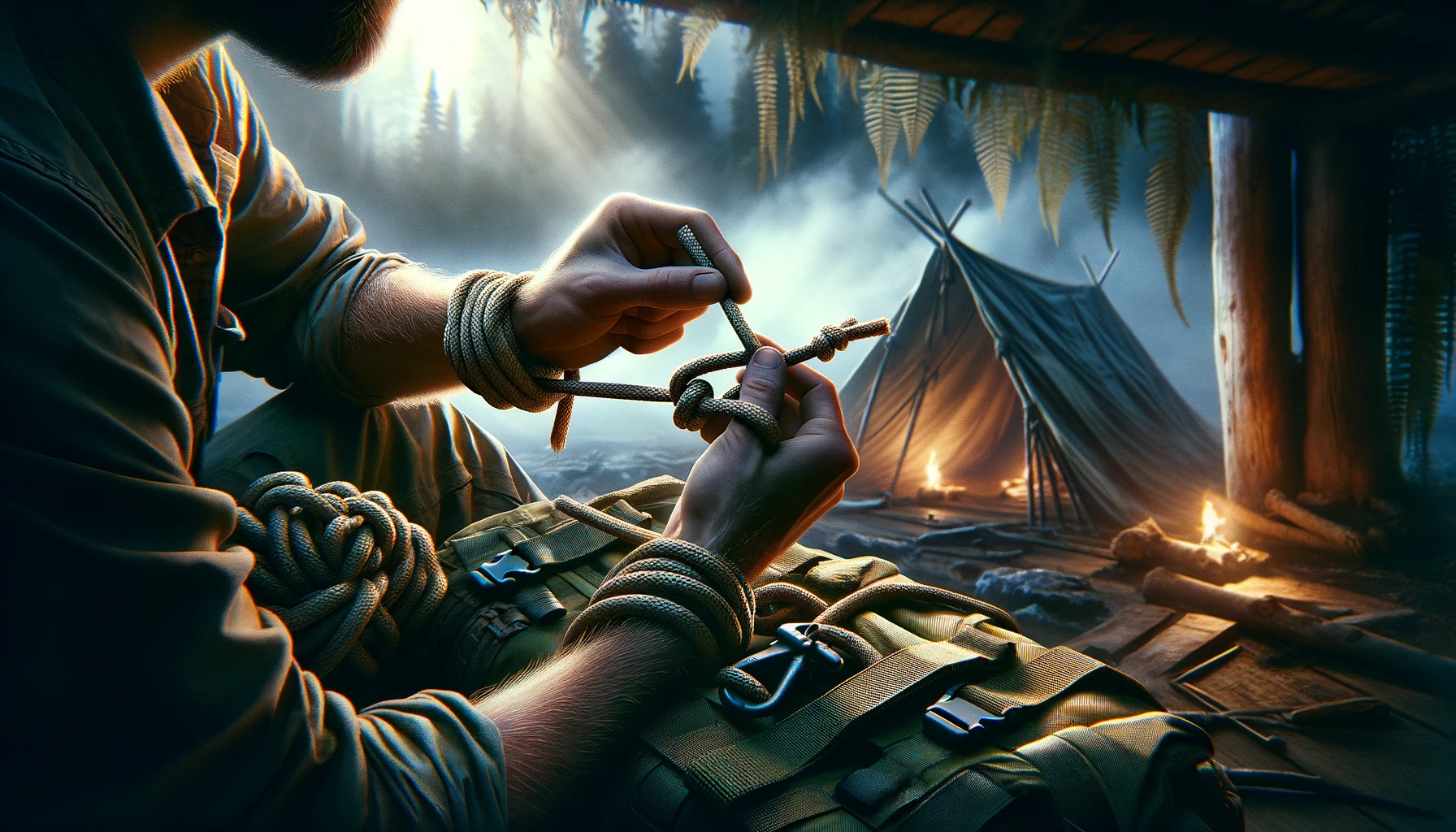
Essential Survival Knot
When you’re out in the wild, knowing how to tie a clove hitch is crucial for securing your gear and building shelters.
This knot is one of the best knots to use for these purposes, thanks to its simplicity and reliability.
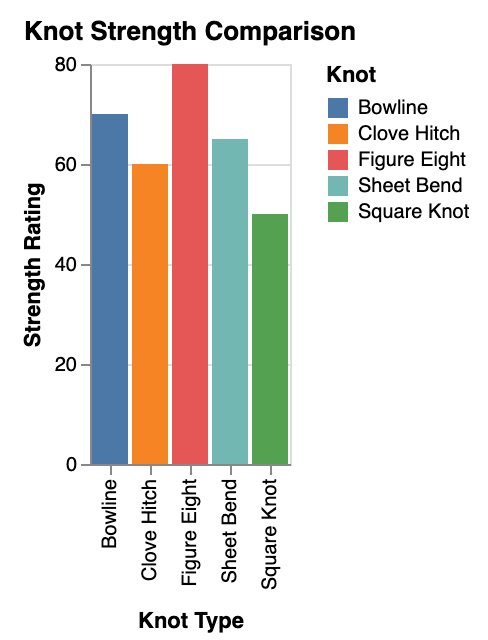
To tie a clove hitch, wrap the rope around a post or pole twice, then cross the rope over itself and pull the end of the rope through the loop formed.
This knot is one of the essential survival knots every camper should master.
Used in Climbing and Camping
The clove hitch is not only handy for camping but also used in climbing scenarios to secure equipment and anchor systems.
| Scenario | Reason for Choosing Clove Hitch |
|---|---|
| Attaching a guy line to a tent or tarp | Easy to tie and adjust, provides a secure hold and easy to untie |
| Securing a rope to a tree or pole for | Offers quick and easy attachment, suitable for temporary or |
| setting up a clothesline or hammock | semi-permanent setups |
| Tying into a climbing harness as a backup | Quick to tie and untie, provides a reliable backup in case of |
| knot during belaying or rappelling | emergency situations |
This knot is efficient in quickly securing two ropes together or tying off a rope together with another object.
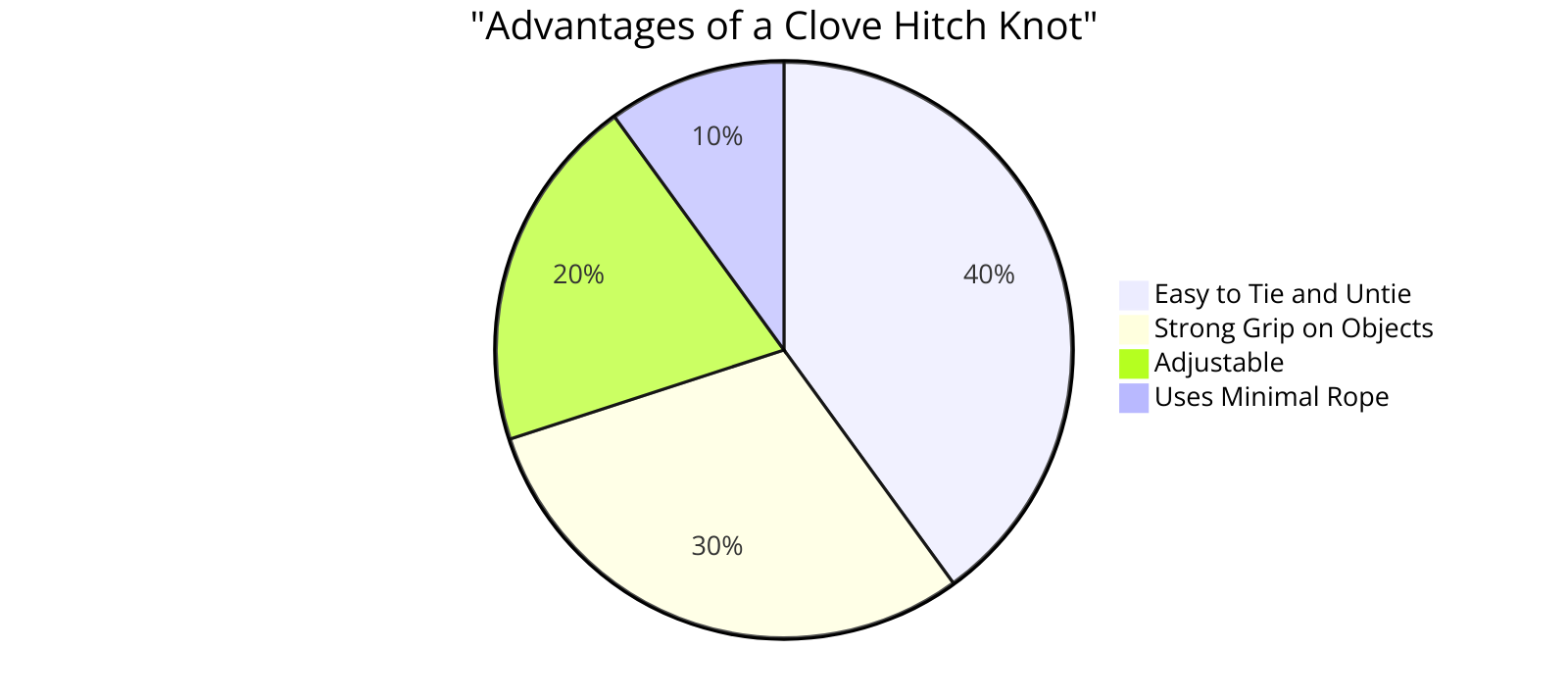
Similar in appearance to the overhand knot or reef knot, the clove hitch excels in situations that require a strong and secure knot that can be easily untied.
Square Knot: Basic Yet Essential for Camping
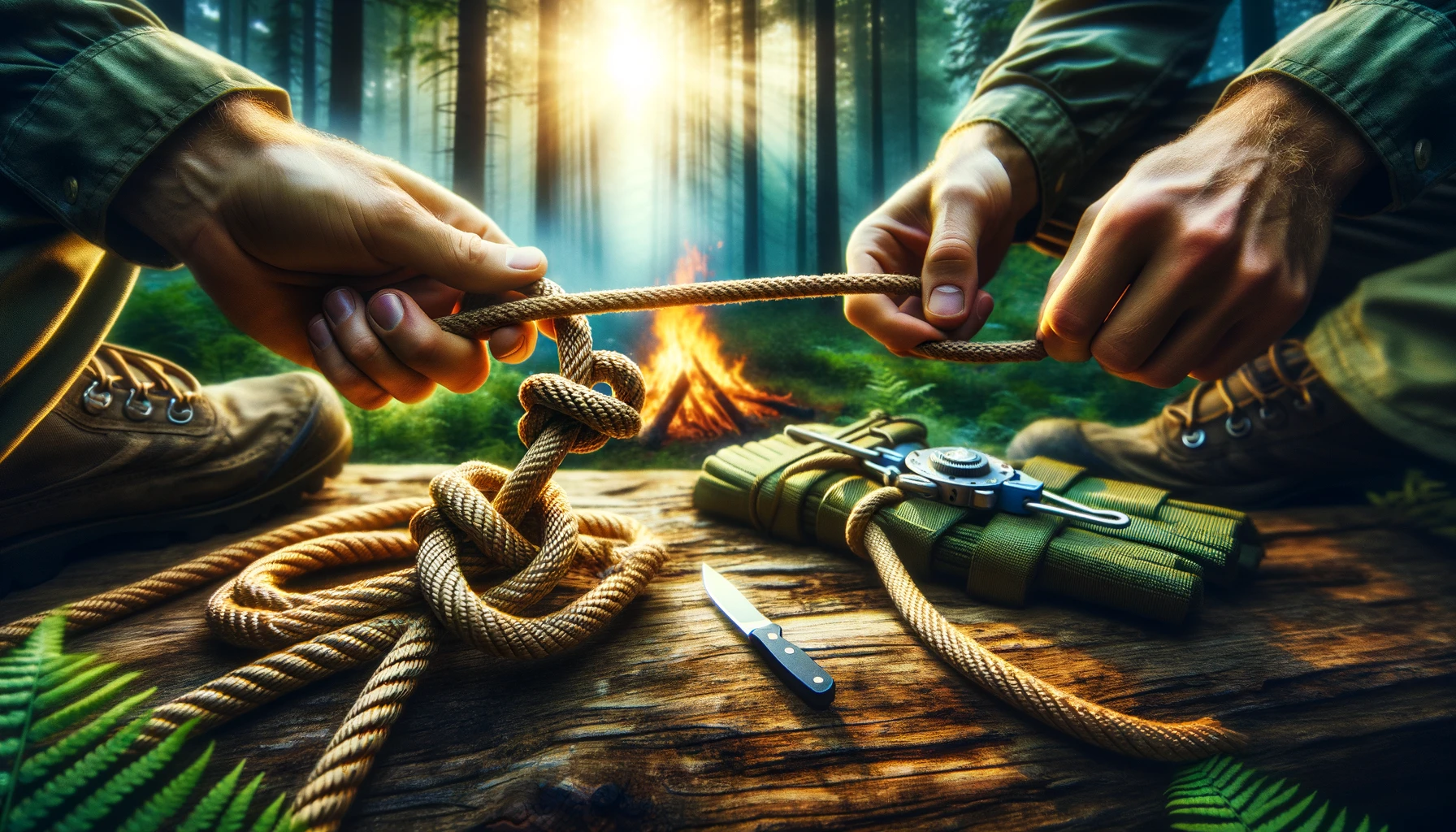
Why Square Knots are Vital for Survival
When it comes to setting up camp in the wild, essential survival knots like the Square Knot are what will keep your shelter secure.
This simple yet useful knot is fundamental in wilderness survival, serving as the knot to tie when joining ropes for various purposes.
| Scenario | When to Use Square Knot | When to Opt for More Complex Knots |
|---|---|---|
| Joining two ropes of similar diameter | Suitable for simple tasks like tying shoelaces or bundling items together | When additional security or strength is required |
| Temporary binding or securing objects | Quick and easy to tie, provides a moderately secure hold | When a more secure or specialized knot is needed |
| Tying a knot that needs to be easily untied | Can be untied quickly and with minimal effort, suitable for non-critical applications | When the knot needs to withstand heavy loads or tension |
Whether you’re securing a tarp over your campsite or creating a makeshift clothesline, the Square Knot is an emergency survival essential that you’ll find yourself using frequently.
Tying the Square Knot: A Step-by-Step Guide
- Cross the ends of the ropes to form a simple knot.
- Loop one end over and under the other, then repeat with the opposite end.
- Pull the ends to tighten the knot securely.
- Remember, the Square Knot is not suitable for heavy loads or critical tasks like the Trucker’s Hitch or Weaver’s Knot; however, it is perfect for day-to-day camping needs.
Sheet Bend: Joining Ropes for Extended Reach

Why It’s Important in Survival Training
When it comes to knots for survival, the Sheet Bend is one of the essential knots you need in your repertoire.
Whether in a real survival scenario or just honing your survival skills, mastering this knot will come in handy.
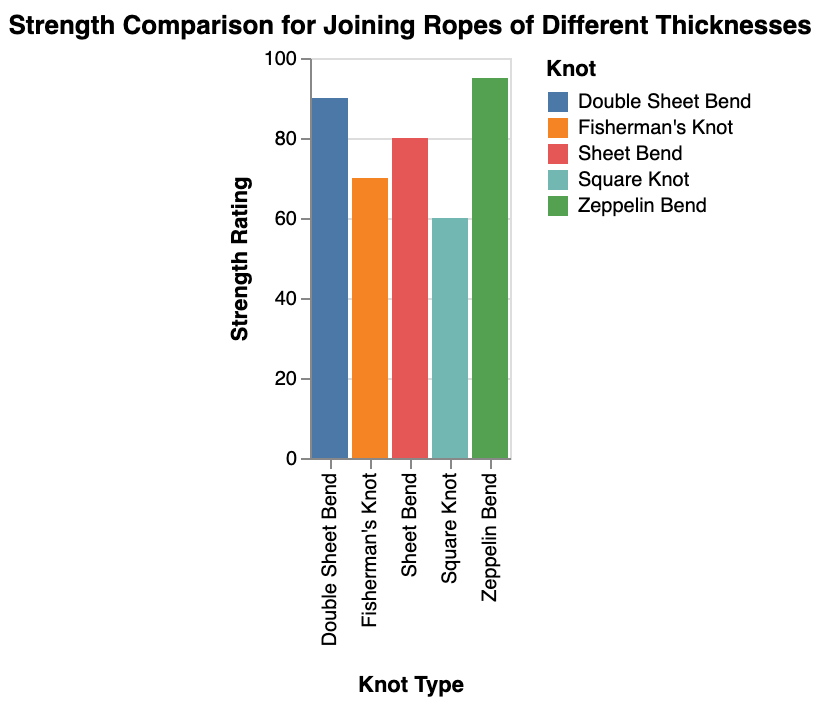
It’s simple, practical, and serves as a valuable addition alongside other essential knots like the clove hitch knot.
“The sheet bend is crucial for adapting to the unpredictable nature of the wild,”
remarks Emily Thompson, survival training coordinator
Tying the Sheet Bend: A Practical How-To
- Take two pieces of rope – one end of each.
- Form a loop at the end of one rope and pass the other rope through it.
- Cross the end of the second rope over its standing part and tuck it under the standing part of the first rope.
- This knot is used to join ropes of varying thicknesses or materials, providing a strong connection.
- Remember, this knot is used to tie around something rather than making a loop.
- The Sheet Bend is not only strong but also easy to untie when needed, unlike a stopper knot which is meant to hold things permanently.
Prusik Knot: The Climber’s Lifeline

A Basic Knot with Vital Uses
In emergency situations, climbers rely on the Prusik knot as their lifeline.
Also known as the reef knot, this knot is a fundamental knot used for climbing and rescue operations.
To tie a Prusik knot, you simply form a loop at the end of a rope and wrap it around another rope, creating a secure attachment point that allows for movement up or down the rope.
Connecting in Critical Moments
The Prusik knot is not only useful for climbers but also serves various purposes in different situations.
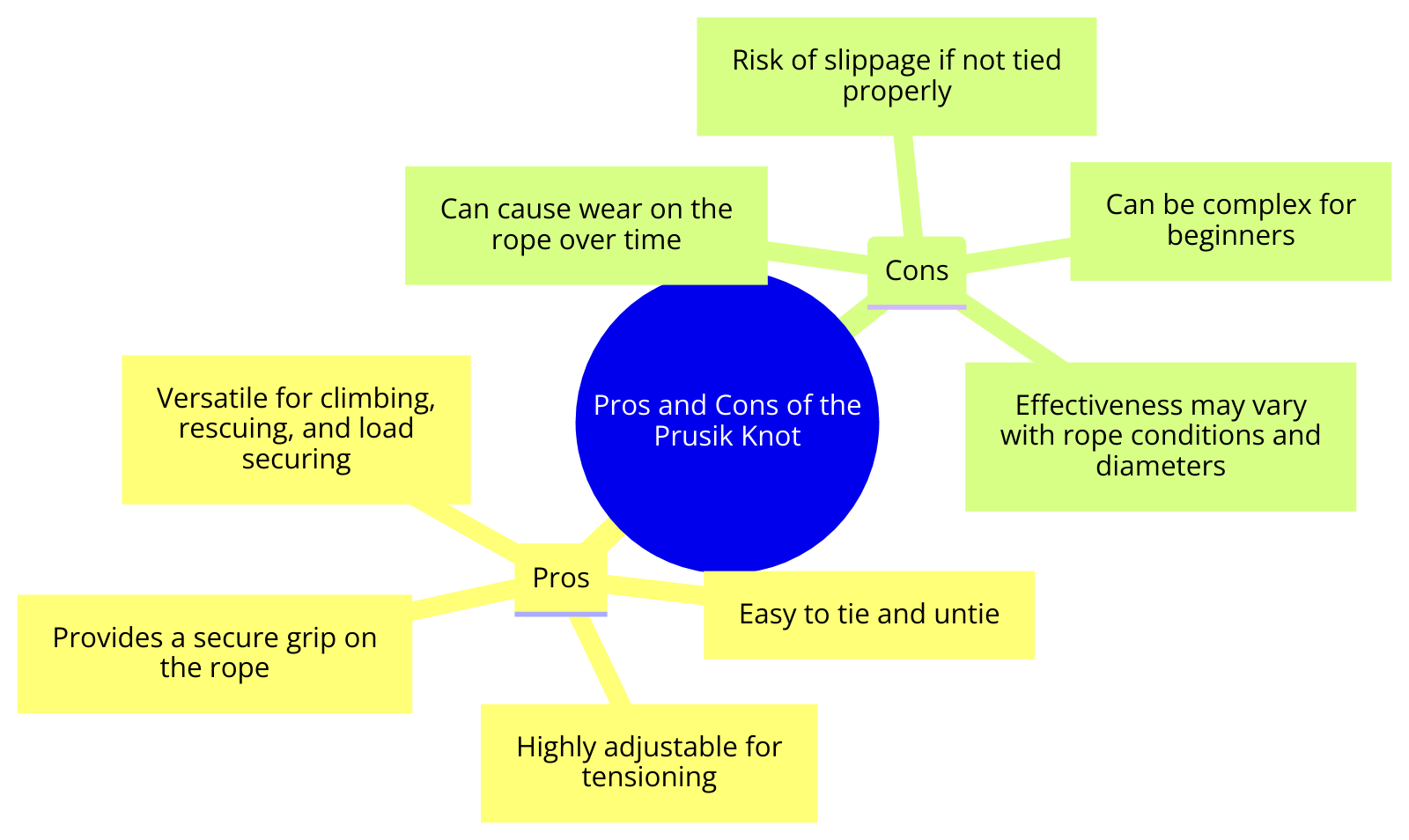
It can be employed in tying two ropes together with the free end of the rope, enabling extended reach, or creating a loop that can be utilized in rescue scenarios.
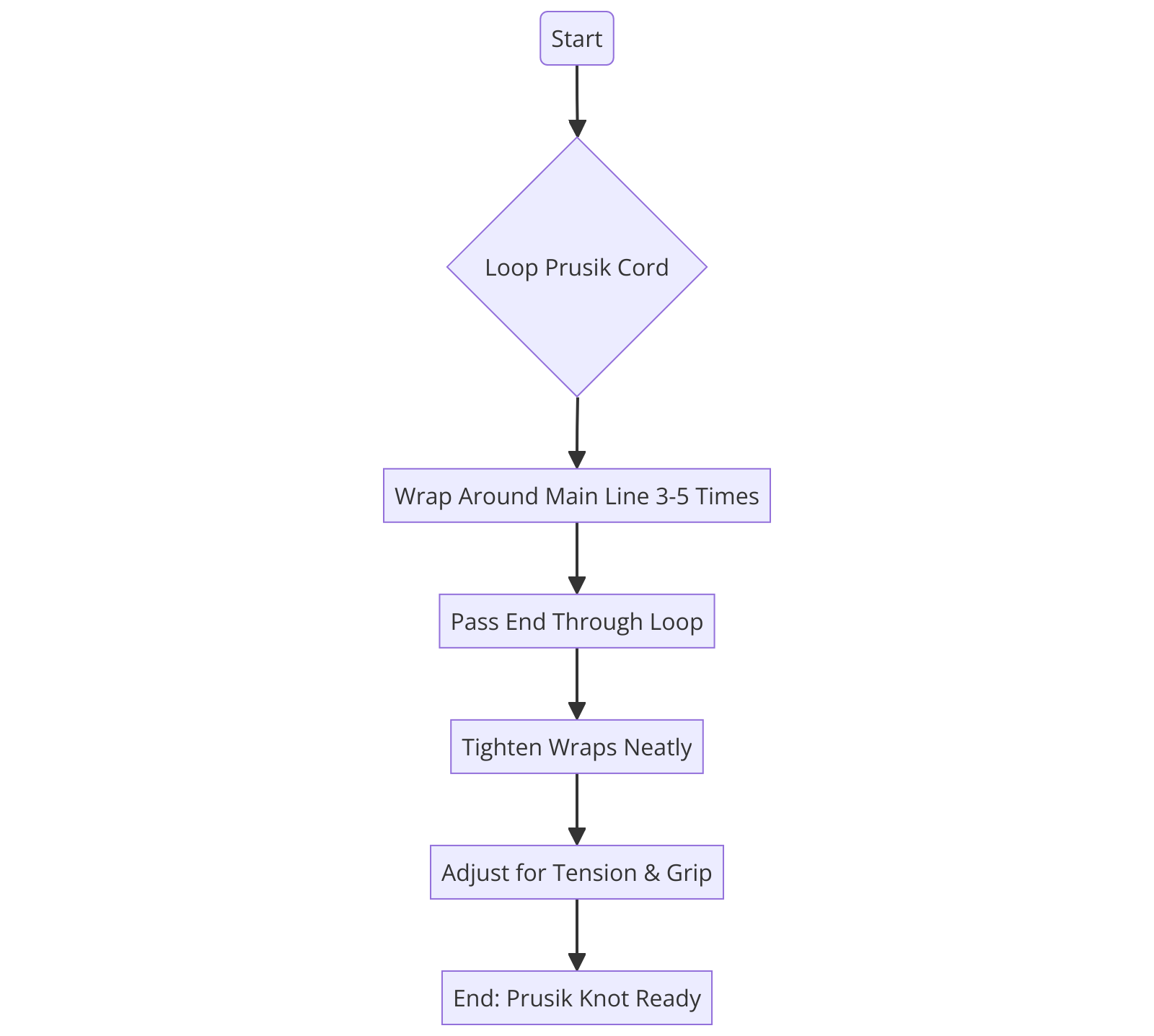
When used correctly, the Prusik knot acts as a versatile tool in creating a secure connection between ropes, providing safety and stability in critical moments.
Figure-Eight Knot: A Must-Know for Safety and Rescue
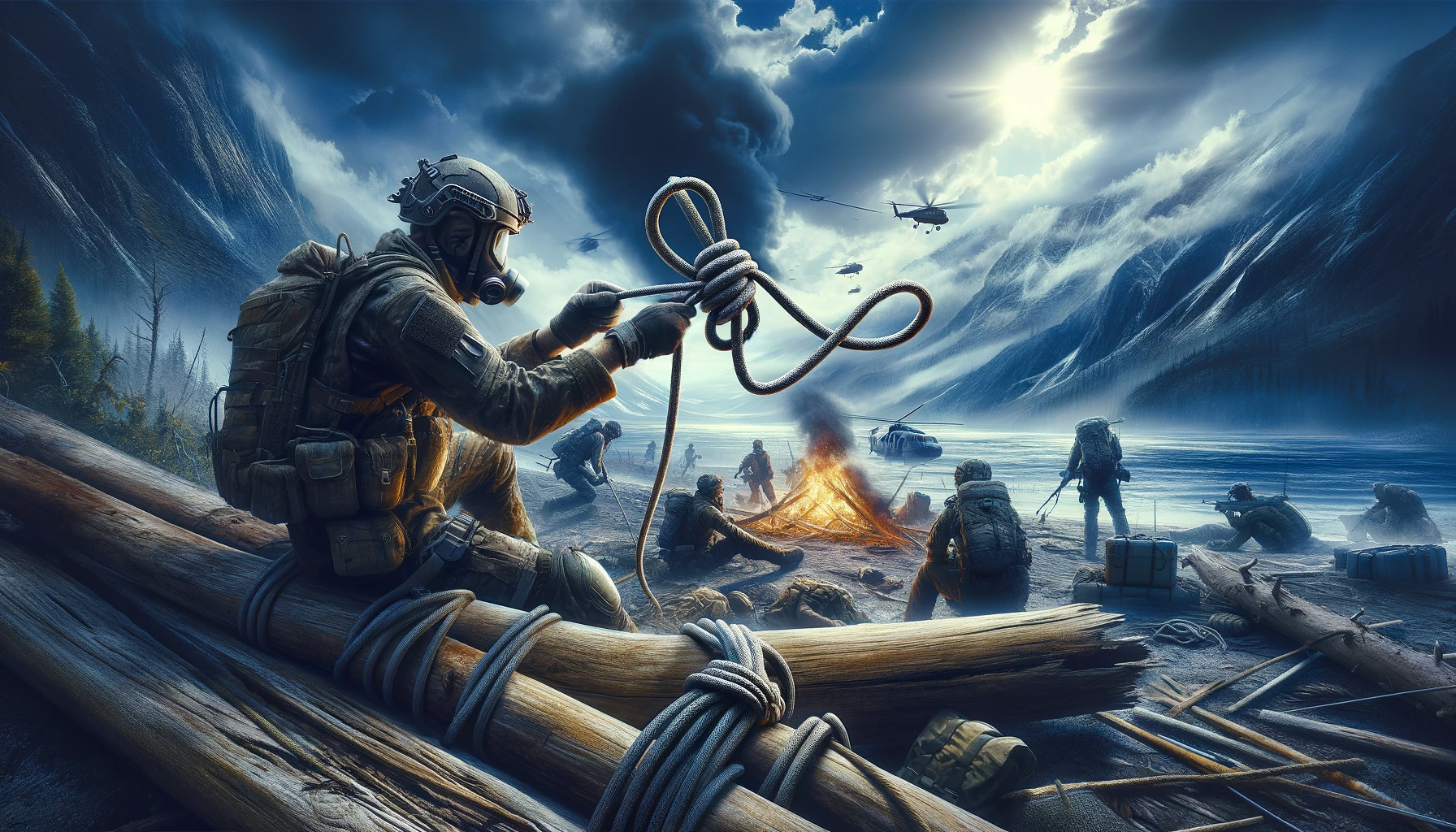
Why Learn the Figure-Eight Knot
When it comes to safety and rescue situations, learning to tie the figure-eight knot is crucial.
This knot is one of the best knots to know as it is versatile and secure.
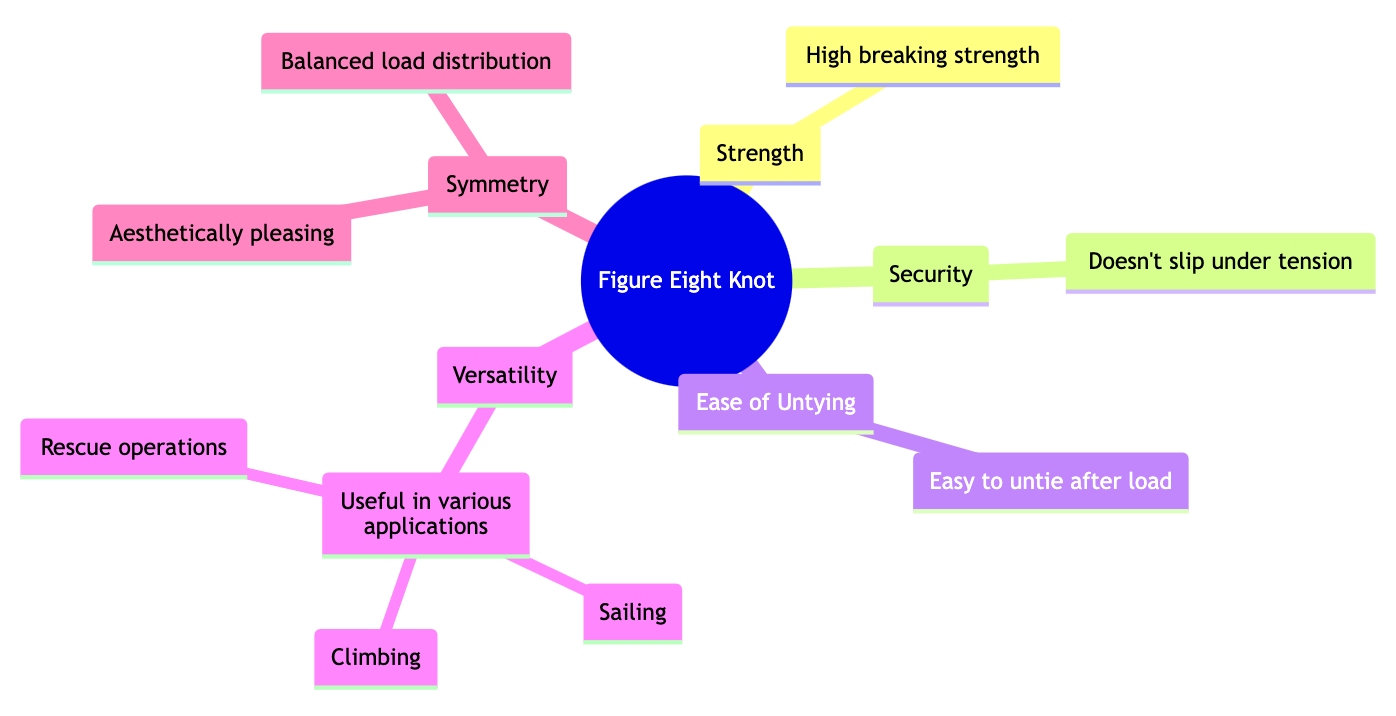
Not only is it easy to tie a variety of knots with this method, but it’s also one of the important knots to learn for creating survival shelters.
In emergency scenarios where strength and reliability are paramount, the figure eight is a go-to knot.
| Knot | Strength | Applications |
|---|---|---|
| Figure-Eight Knot | High | Climbing, sailing, general purpose |
| Bowline Knot | High | Sailing, rescue operations, securing loads |
| Clove Hitch | Moderate to Low | Securing to posts, temporary holds |
| Square Knot | Moderate | Bundling, joining two ropes of similar size |
| Sheet Bend | Moderate | Joining two ropes of different diameters |
| Double Overhand Knot | Moderate | Securing objects, backup knot |
How to Tie the Figure-Eight Knot
To tie a figure-eight knot, start by creating a loop with the rope and passing the end of the rope through the loop.
Next, bring the rope around and back through the loop.
Ensure to dress the knot by tightening it properly.
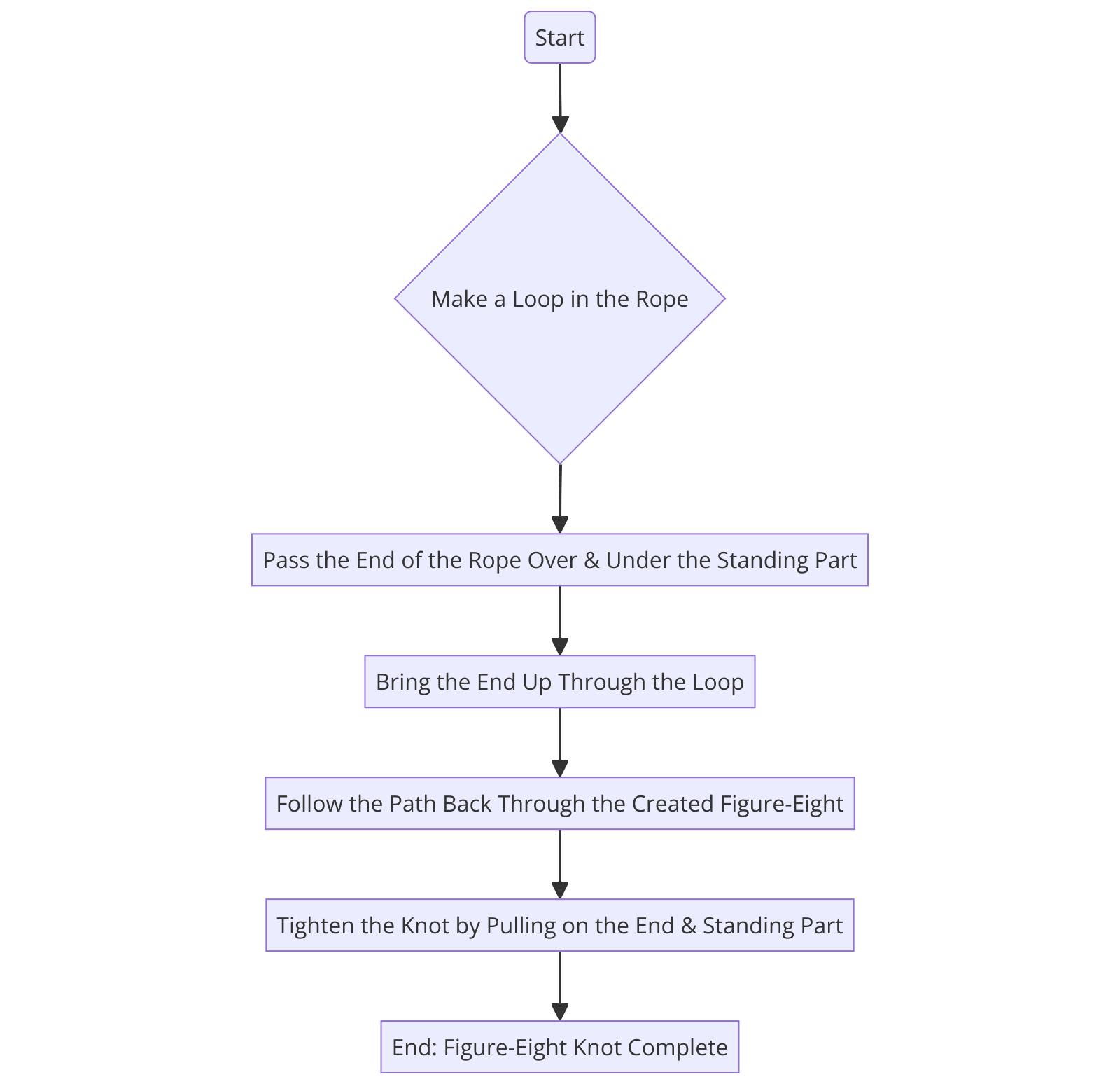
For added security, use a square knot to tie off the end.
In situations where quick and efficient knots help, the figure-eight knot shines as one of the most reliable knots you can use.
Rope Knots for Camping: Versatility in the Wild

Simple Yet Essential: The Sheet Bend Knot
The Sheet Bend knot is a go-to when you need to tie two ropes together for extended reach.
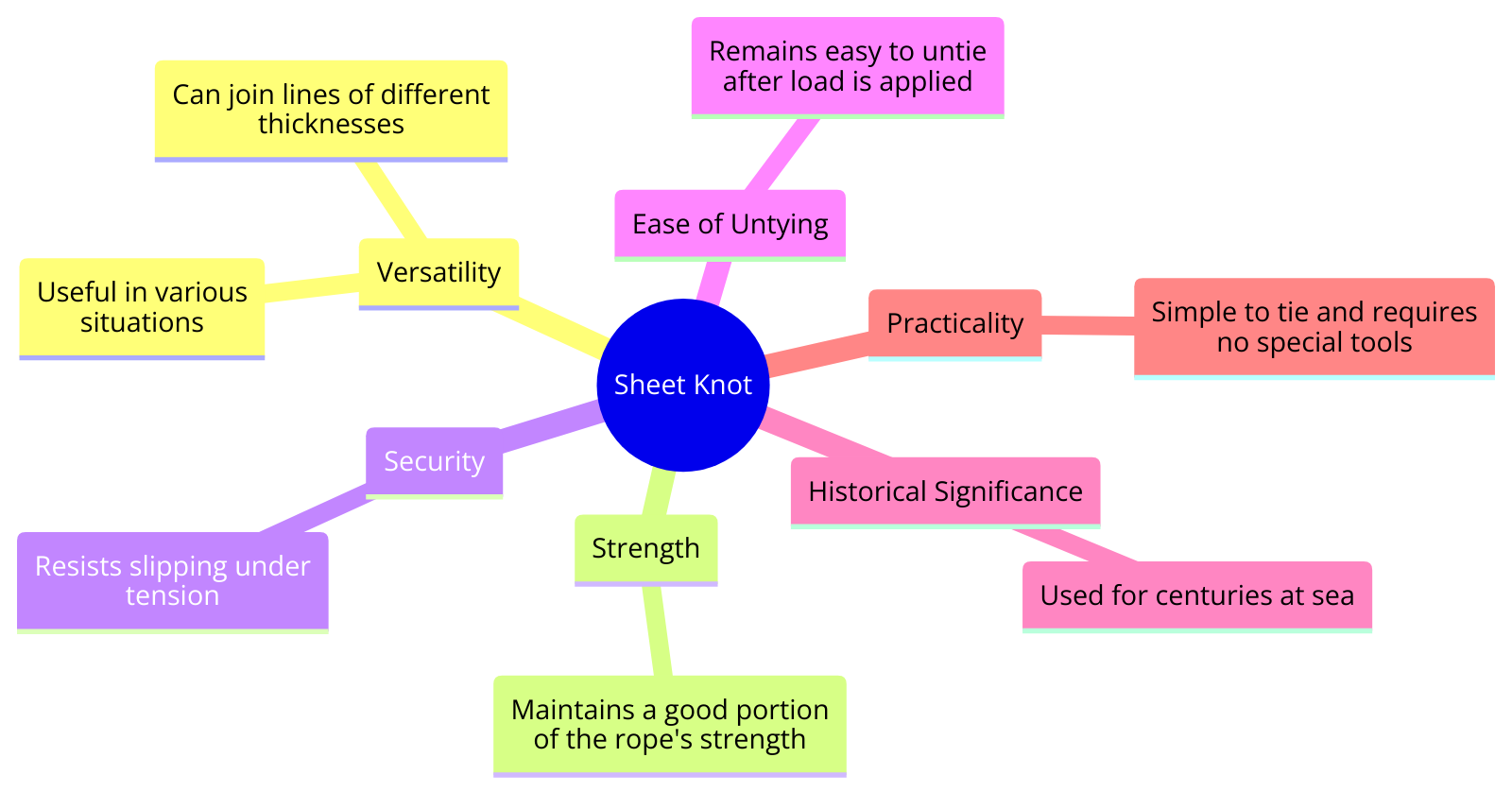
This simple knot makes it easy to join ropes of different sizes, and its adjustable loop knot feature allows you to customize the length as needed.
Whether you need to tie down gear or secure tarps for shelter, this knot is useful for various camping situations.
A Must-Have for Campers: The Figure-Eight Knot
The Figure-Eight knot is another simple to tie knot that comes in handy for campers.
| Knot | Uses in Camping |
|---|---|
| Figure-Eight Knot | Securing tent guy lines, tying off ropes |
| Bowline Knot | Hanging food bags, securing tarps, creating loops |
| Clove Hitch | Securing tent lines, tying down tarps, securing gear |
| Square Knot | Joining ropes for shelters, bundling firewood or gear |
| Sheet Bend | Joining ropes for longer lines, securing tarps |
| Double Overhand Knot | Securing items to packs, creating stopper knots |
Not only does this one knot offer a secure hold, but it also provides an easy way to create a reliable loop for different tasks.
From safety and rescue operations to everyday camping needs, the Figure-Eight knot is a versatile choice for your outdoor adventures.
More Resources:
- For an animated step-by-step guide on tying the bowline knot, visit Animated Knots by Grog.
- To explore a variety of rope knots including the bowline with illustrated instructions, check out NetKnots.
- For a comprehensive guide on how to tie a bowline knot, including its history and uses, 101 Knots offers detailed insights.
- If you’re looking to learn about the figure-eight knot and other essential knots for various applications, Family Handyman provides practical advice and step-by-step instructions.
- For a deep dive into the practical applications and step-by-step instructions for tying essential knots, including the bowline and figure-eight, The Family Handyman’s guide is a valuable resource.


